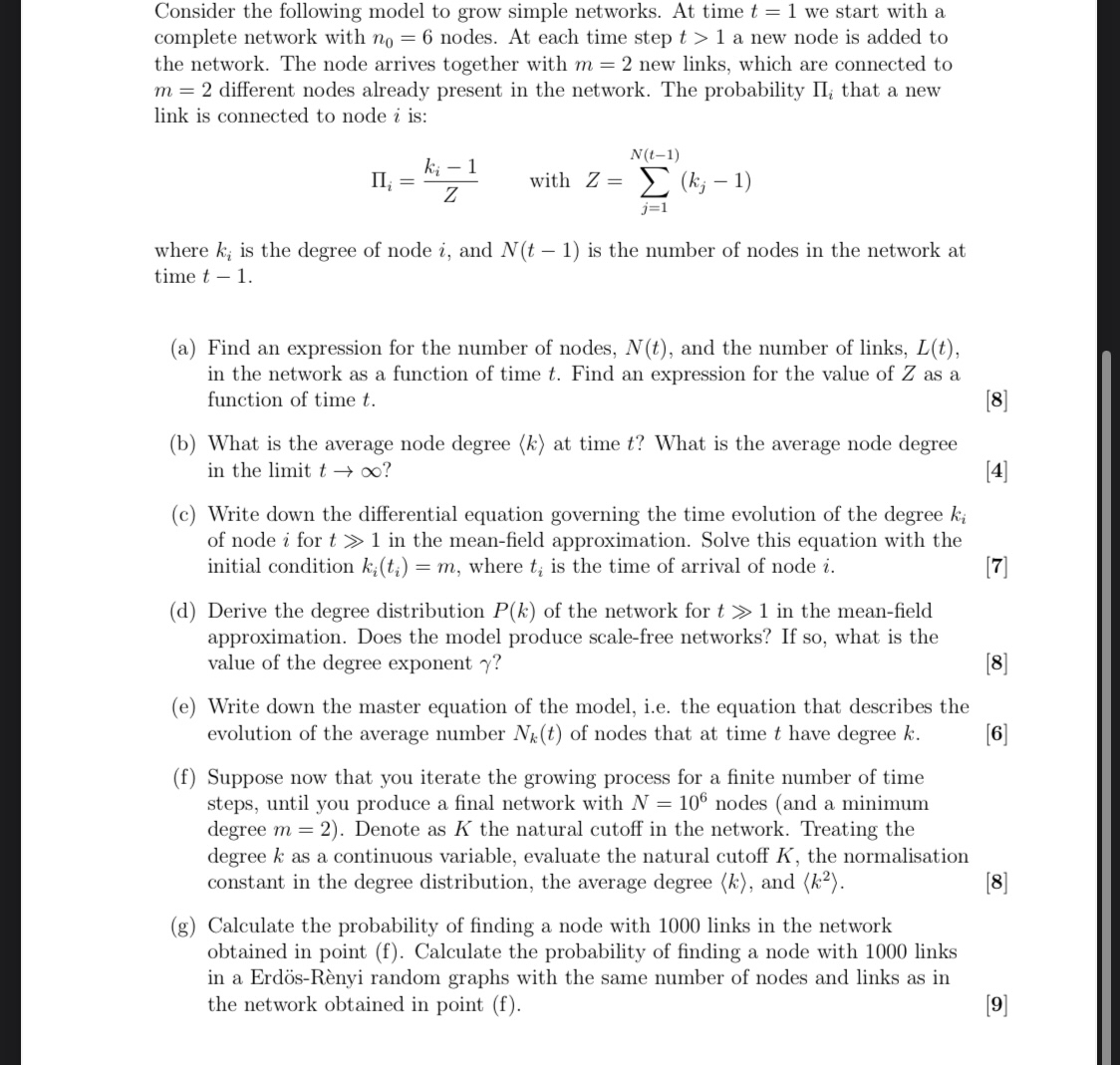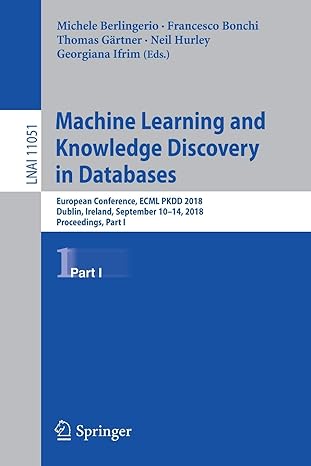Answered step by step
Verified Expert Solution
Question
1 Approved Answer
Question f and g only please complex networksConsider the following model to grow simple networks. At time t = 1 we start with a complete
Question f and g only please complex networksConsider the following model to grow simple networks. At time we start with a complete network with nodes. At each time step a new node is added to the network. The node arrives together with new links, which are connected to different nodes already present in the network. The probability that a new link is connected to node is: with where is the degree of node and is the number of nodes in the network at time a Find an expression for the number of nodes, and the number of links, in the network as a function of time Find an expression for the value of as a function of time b What is the average node degree :: at time What is the average node degree in the limit c Write down the differential equation governing the time evolution of the degree of node i for in the meanfield approximation. Solve this equation with the initial condition where is the time of arrival of node d Derive the degree distribution of the network for in the meanfield approximation. Does the model produce scalefree networks? If so what is the value of the degree exponent e Write down the master equation of the model, ie the equation that describes the evolution of the average number of nodes that at time have degree f Suppose now that you iterate the growing process for a finite number of time steps, until you produce a final network with nodes and a minimum degree Denote as the natural cutoff in the network. Treating the degree as a continuous variable, evaluate the natural cutoff the normalisation constant in the degree distribution, the average degree :: and :: g Calculate the probability of finding a node with links in the network obtained in point f Calculate the probability of finding a node with links in a ErdsRnyi random graphs with the same number of nodes and links as in the network obtained in point f 
Question f and g only please complex networksConsider the following model to grow simple networks. At time we start with a complete network with nodes. At each time step a new node is added to the network. The node arrives together with new links, which are connected to different nodes already present in the network. The probability that a new link is connected to node is:
with
where is the degree of node and is the number of nodes in the network at time
a Find an expression for the number of nodes, and the number of links, in the network as a function of time Find an expression for the value of as a function of time
b What is the average node degree :: at time What is the average node degree in the limit
c Write down the differential equation governing the time evolution of the degree of node i for in the meanfield approximation. Solve this equation with the initial condition where is the time of arrival of node
d Derive the degree distribution of the network for in the meanfield approximation. Does the model produce scalefree networks? If so what is the value of the degree exponent
e Write down the master equation of the model, ie the equation that describes the evolution of the average number of nodes that at time have degree
f Suppose now that you iterate the growing process for a finite number of time steps, until you produce a final network with nodes and a minimum degree Denote as the natural cutoff in the network. Treating the degree as a continuous variable, evaluate the natural cutoff the normalisation constant in the degree distribution, the average degree :: and ::
g Calculate the probability of finding a node with links in the network obtained in point f Calculate the probability of finding a node with links in a ErdsRnyi random graphs with the same number of nodes and links as in the network obtained in point f
Step by Step Solution
There are 3 Steps involved in it
Step: 1

Get Instant Access to Expert-Tailored Solutions
See step-by-step solutions with expert insights and AI powered tools for academic success
Step: 2

Step: 3

Ace Your Homework with AI
Get the answers you need in no time with our AI-driven, step-by-step assistance
Get Started


